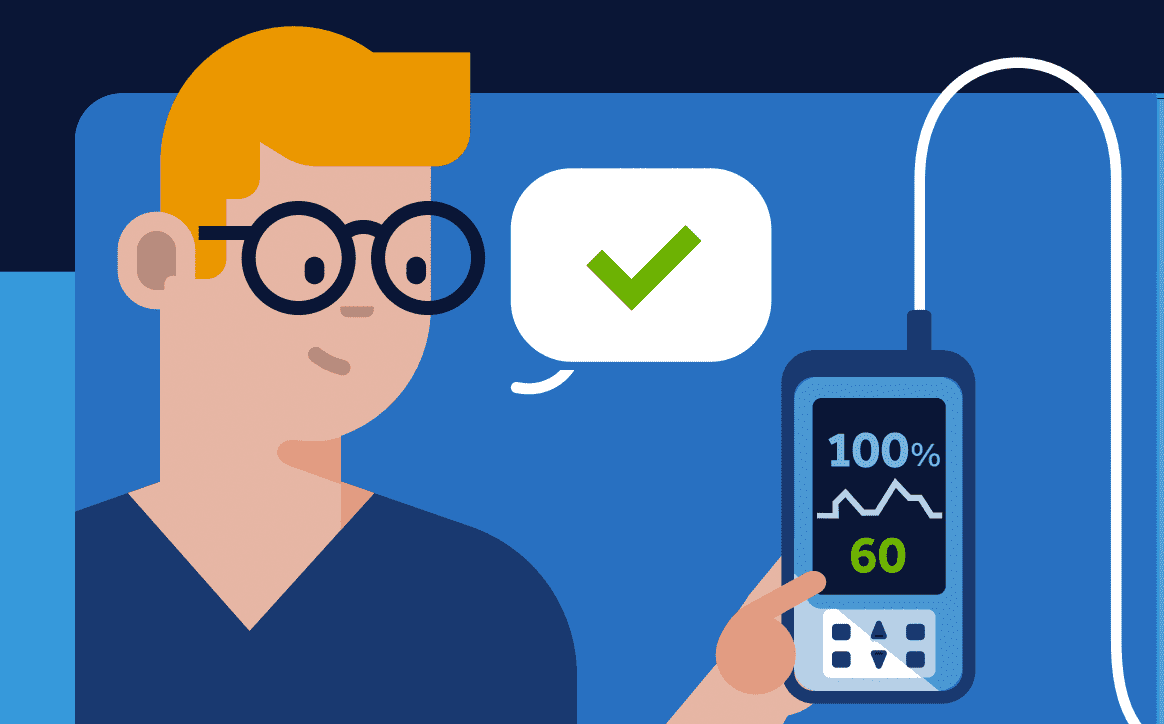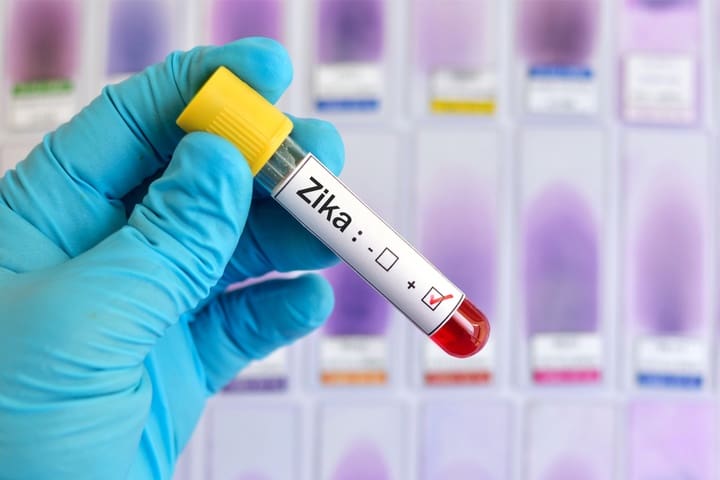Family survivors of a suicide inevitably ask two questions: “Why?” and “Could it have been prevented?” For survivors, these questions never have satisfactory answers. The sorrow, guilt, despair, anger, rejection, and grief experienced by family and others can’t be fully captured in words. Any suicide leaves behind unresolved problems and unanswered questions, and as Jill Bialosky noted in her book about her sister’s suicide, An Unfinished Life. Suicide has a ripple effect that complicates normal grieving and may lead to unresolved grief (Kuehn, 2013).
A number of inter-related neurobiological, genetic, sociocultural, economic, and environmental factors contribute to increased risk of suicide. Motivational and environmental factors inherent in the act of suicide make it difficult to predict, but the more knowledgeable nurses are, the better we are prepared to intervene to prevent it. This article presents some background information about suicide in adults, discusses the thought processes of those considering suicide, and provides suggestions for screening to identify patients at risk.
By the numbers asdf
According to the Centers for Disease Control and Prevention (CDC), one person dies by suicide every 15 minutes, for a total of 38,364 per year. Annually, 2.2 million adults plan suicide, 8.3 million have thoughts of suicide, and 1 million adults attempt suicide. Young adults 18 to 29 years have more serious suicidal thoughts and attempts (1.0%) than those over 30 (0.3%). Suicide is the tenth leading cause of death, the seventh for white males, and the third for 15 to 24 year olds.
A 2013 CDC analysis found that suicide rates among persons age 35 to 64 years increased 28.4% from 1999 to 2010. The highest rates occurred in those aged 45 to 54. Women have more suicidal thoughts and attempts than men by a 3 to 1 ratio. An underlying mental illness is diagnosed in 90% of completed suicides, and 60% of suicides end in death on the first attempt. Slightly more than a third (33.3%) of persons who completed suicide tested positive for alcohol, 23% for antidepressants, and 20.8% for opiates. The projected cost of suicide in combined medical and work loss was estimated to be $34.6 billion in 2012.
Mental disorders associated with suicide
Depression was the underlying mental disorder in 66% of suicides in a Swedish study, and 2% to 15% of persons diagnosed with depression die by suicide (Bradvik, Mattisson, Brogen, et al., 2010). Among persons with Bipolar Spectrum Disorders, particularly types associated with unstable mood, dysphoric-agitation, aggression, or impulsivity between 3% and 20% die by suicide. Other mental disorders associated with high suicide rates are schizophrenia, trauma, bullying (especially among young persons), exposure to violence or engaging in violent behaviors, and alcohol and substance abuse. Persons with anxiety and panic attacks who feel hopeless and often ruminate about dying are also at risk. Reassurance that a panic attack is not a heart attack is not enough; such individuals should be referred for psychiatric evaluation. Veterans with mental disorders and not necessarily combat related exposure also have high rates of suicide.
Thoughts associated with suicide
Repeated themes or states of mind that occur shortly before suicide are termed ruminative flooding, defined as a confusing and overwhelming profusion of negative thoughts. Joiner, Van Orden, Witte, and Rudd (2009) suggest there are two interpersonal constructs underlying suicidal desire. First is a thwarted sense of belongingness, which leads to frustrated psychological needs, and the second is a perceived sense of burdensomness. Both constructs contribute to a sense of hopelessness. The individual feels trapped into believing that life will never be better—essentially, a state of hopelessness. Perception of being a burden to others contributes to this constricted thinking, or tunnel vision, along with agitation, that leads the individual to believe suicide is the only “logical” escape from unbearable psychic pain. Dr. Edwin Shneidman (1996) founder of the Los Angeles Suicide Prevention Center, refers to internalized pain as psychache. Internalized negative views of self are accompanied by distorted thought processes, which lead to a perturbed mind. Suicide becomes the way to end unbearable pain.
Psychache drives a person to consider suicide, but it is the acquired fearlessness that overcomes ambivalence and allows completion of the act, a process Simon (2012) terms suicide rehearsals. Often the pattern of negative thoughts begins in early childhood. Over time, an individual becomes habituated to painful states of mind. Pain is endured as a means of survival and as a way to deny gratification to those who have inflicted pain. Self-injury or participating in high-risk behaviors may become the practice arena for acquiring tolerance for pain. People need the will to die, in essence, to overcome natural tendencies for self-preservation.
Individuals remain ambivalent about living or dying up until a short time before they actually commit suicide. Survivors of potentially lethal attempts report they bullied themselves into taking action. The last phase in the suicidal continuum is withdrawal from social contacts. This allows the individual time to focus on his or her plans, and to avoid painful interactions with others. For some, having a plan in place brings a sense of relief.
Disputing myths of suicide
The following statements dispute some of the myths about suicide:
- Suicide is not a selfish or cowardly act. Those who commit suicide are experiencing severe psychic pain.
- Talking about suicide doesn’t increase the likelihood it will occur. In fact, talking helps potential victims reflect on their thoughts and obtain new information to integrate into their constricted thought processes. It’s also a way to identify those considering the act.
- Repeated suicide attempters are not just seeking attention. With repeated attempts the individual becomes increasingly desensitized to self-injury, and may use more lethal means to kill him- or herself.
Screening strategies
Suicide risk is determined on a continuum from those who have thoughts about suicide but have reasons to live, to those who have a plan and are at higher risk. Risk for suicide is not constant and can vary with individual circumstances. Screening involves identification of those potentially at risk for suicide, and referring them to appropriate resources for further assessment. All healthcare providers, including nurses, need to recognize the importance of suicide screening across the life span and particularly in areas where patients at risk for suicide are more likely to be seen, such as the ED and psychiatric units. However, it is important to know that 38% of adults and 50% to 70% of older adults visited primary care providers within a month of dying by suicide (LeFevre, 2014). Screening involves identification of those potentially at risk for suicide, and referring them to appropriate resources for further assessment.
The America Psychiatric Nurses Association (APNA) recently published “Competencies for Assessment and Management of Individuals at Risk for Suicide.” The competencies are available on the APNA website. While the competencies are adapted specifically for psychiatric/mental health nurses, they cover useful training guidelines for all nurses. http://www.apna.org
The following is a list of some strategies for screening. Remember that the most important component of suicide prevention is developing a relationship with the patient. Fostering a collaborative, problem-solving approach starts with taking seriously all threats and attempts by expressing concern. Openness to talking about suicide is paramount in conveying concern.
Screening questions
No suicide screening scale or strategy has been empirically tested for validity and reliability, but there are recommendations to assess risk. One place to start is using questions to screen patients at risk for depression. Begin with a few general questions about how things are going in the patient’s life, for example, “Have you had any recent upsetting events?” Depression should be considered in patients with substance abuse, or overdose, or self-inflicted injury. Keep in mind that about two thirds of persons with depression do not seek treatment or are not treated appropriately. The following two questions may help in identifying depression:
- During the past month have you been bothered by little interest in doings things that usually give you pleasure?
- During the past month have you often been feeling down, depressed, or hopeless? Moody? Tearful? Irritable? Sensitive to criticism?
Positive answers to the depression questions may be the first step that leads to further questions about suicide and self-harm. Consider these five factors—intent, belongingness, hopelessness, history of acquired tolerance for pain, and impaired or distorted problem-solving, difficulty generating solutions—when asking the following questions:
- Have you felt so sad or down that you thought life is not worth living?
- Have you thought about hurting yourself or taking your own life? Have you made any prior attempts?
- Have there been any recent changes in your behavior? (Note: This is a good question to ask a family member if present.)
Additional screening tools:
Applied Suicide Intervention Skills Training (ASIST)
ASIST involves a two day interactive training session where participants learn intervention skills to identify and intervene to prevent the immediate risk of suicide.
https://www.livingworks.net/programs/asist/
Question, Persuade and Refer (QPR)
QPR is a screening intervention designed to teach lay persons and professionals how to recognize early warning signs of persons at risk for suicide, to intervene and refer them to appropriate resources. Training takes about 90 minutes either in a classroom or online.
https://www.qprinstitute.com/about-qpr
safeTALK
The safeTalk approach involves a half-day of training that prepares anyone over 15 regardless of experience to be a “suicide-alert helper.” The safeTalk program is designed to identify persons at risk and to connect them with interventions and resources. Workshop availability and training information is available online.
https://www.livingworks.net/programs/safetalk/
ED-SAFE (Emergency Department Safety Assessment and Follow-up Evaluation)
ED-SAFE screening begins with an introductory script to provide a nonthreatening climate to ask three questions: (1) Over the past 2 weeks have you felt down, depressed, or hopeless? (2) Over the past two weeks, have you had thoughts of killing yourself? (3) Have you ever attempted to kill yourself? If ‘yes,’ then when. A recent attempt is within the past 6 months. Additional questions and referral are recommended for positive answers to the questions.
https://www.emnet-usa.org/ED-SAFE/edsafe
Columbia-Suicide Severity Rating Scale (C-SSRS)
The C-SSRS is an evidenced based screening and assessment questionnaire developed by Dr. Kelly Posner and other experts to determine suicidal ideation of increasing severity from a wish to die to an active thought of killing oneself with a plan and intent. The short version consists of five questions that are answered “yes” or “no.” Each item is defined, and standardized questions are provided to guide the interviewer. Positive answers to the first two questions lead to further questions regarding intensity of ideation and suicidal behaviors. No further questions are asked if an individual has not engaged in suicidal ideation or behavior. Training is recommended.
https://www.cssrs.columbia.edu/about_cssr.html
Modified SAD PERSONS Scale (SPS)
Although the SPS was developed for, and is used as, a screening tool for suicide risk, studies have not demonstrated its accuracy (Bolton, 2013; Warden, 2014). Any screening assessment, therefore, should include other risk factors (both historic and demographic) and intention in deterring risk. Known risk factors can then be evaluated in association with safety and protective factors. The most important screening questions are direct inquiry concerning depression, suicidal ideation and behaviors.
https://www.nlm.nih.gov/
| Factor | Points |
| S = Sex (male) | 1 |
| A = Age (45 years) | 1 |
| D = Depression or hopeless | 2 |
| P = Previous suicide attempts or psychiatric care | 1 |
| E = Excessive alcohol or drug use | 1 |
| R = Rational thinking loss, or psychosis organic brain syndrome | 2 |
| S = Separated, divorced, or widowed | 1 |
| O = Organized plan or serious attempt | 2 |
| N = No social support | 1 |
| S = Stated future intent (determined to repeat or ambivalent) | 2 |
| Score of 6-8 = full emergency evaluation/treatment | Score of 9 or greater = immediate psychiatric hospitalization |
The PHQ-9 Patient Health Questionnaire is a quick depression screening tool for use in primary healthcare settings. It consists of nine items, and a score of more than 10 indicates moderate depression. Response to item 9 of the PHQ-9 for depression serves to identify persons at risk for suicide or an attempt ( Simon, Rutter, Petersen, et al., 2013). The questionnaire, which PRIME-MD holds the copyright to, is available at: http://www.integration.samhsa.gov/images/res/PHQ%20-%20Questions.pdf.
Evaluating intent
Those with serious intent do not share their plans, or deny intent if suspected by others. That denial accounts for increased suicide rates by persons recently released from inpatient psychiatric hospital. Some may minimize their intent if they believe that suicide is a sign of weakness or is a taboo topic.
Ambivalence plays an important role in determining intent. Helping suicidal individuals see reasons to live may be a first line of intervention. Evaluating intent involves a combination of what the patient tells the interviewer, the nature of the plan, and what the person consciously or unconsciously does not reveal. Intent can be viewed on a continuum from withheld intention, to reflected intention, quality and quantity of thinking/planning, to stated intention—directly telling someone about suicidal intent.
Evaluation of intent.
The list below assigns level of risk (lower or higher) associated with various aspects of conscious and unconscious intent.
- Conscious Intent: The individual. . .
- Is aware of effect of suicide on others: lower risk
- Has realistic understanding of implications of death: lower risk
- Has a plan to commit suicide: higher risk
- Has access to lethal means (for example, guns, hanging, jumping from bridge or building, knowledge of lethal overdose): higher risk
- Has experienced a life-altering event or accumulation of events: higher risk
- Unconscious Intent: The individual. . .
- Has unconscious fantasies for rescue, revenge, belief in hereafter or in joining lost loved one: higher risk
- Has unconscious wishes that self-harm will manipulating others: higher risk
Risks factors.
Risk factors include being male: Males have three times the risk of completed suicide than females. Other high-risk groups include Native Americans, being single, or living in a rural community.
Where we live is now considered an additional risk factor, with the Rocky Mountain States having the highest completed suicide rates. Thoughts and attempts also vary by region, with suicidal thoughts higher in the Midwest and West. Factors such as reporting variation, higher altitude, isolation, the economic downturn, access to guns, and other sociocultural factors may contribute to increased risk.
Clinical judgment and experience are important skills in evaluating how to weigh positive risk factors against protective ones.
Below is a summary of items to consider when assessing a patient for suicidal risk.
Assessing patients for potential suicide riskConsider recent major stressors such as financial stress, job or status loss, death of loved one, divorce or relationship breakup, or major change in physical health. Risk factors Associated with symptoms of depression: • Insomnia* Risk factors Historic: • History of mental illness, particularly, bipolar disorder, borderline personality disorder, schizophrenia, major depressive disorder, and posttraumatic stress disorder Risk factors Social and demographic: • Male 3:1 female Preventive or protective factors • Reasons for living, perceived meaning in life, adaptive beliefs |
When to refer
Follow positive answers to questions about suicidal thoughts with additional questions to help determine the need for a more extensive evaluation by a mental health provider. Sample questions are:
- Have you had thoughts about a way or plan to kill yourself?
- Do you have the means? Do you have access to guns?
- Have you shared your thoughts, ideas with anyone?
- Do you have someone with whom you can talk about your thoughts?
- Have you practiced or mentally rehearsed your plan?
- What keeps you from carrying out your plan?
If you are unsure whether a referral is necessary, it’s best to err on the side of caution.
Nurses can make a difference
Nurses play an important role in suicide prevention. Keep the following tips in mind:
- Take all threats or suicide attempts seriously and convey concern.
- Emphasize a relationship alliance; developing rapport for the patient increases willingness to talk about suicide.
- Look for warning signs and discuss them with the patient.
- Collaborate with colleagues and patient for safety plan, including how to cope with negative thoughts and anxiety.
- With permission, call supportive family members/friends.
- Have access to referral resources such as emergency phone contacts; call 911 if a patient in the community is agitated or seems in imminent danger of self-harm.
- Document assessment of risk, with rationale for interventions.
By following these tips, nurses can potentially save lives.
Selected references
Alanzo D, Stanley B. A novel intervention for treatment of suicidal individuals. Psychiatr Serv. 2013;64(5):494.
Andrew LB, Brenner BE. Depression and suicide. Medscape. March 8, 2012.
http://emedicine.medscape.com/article/805459
Bolton JM, Spiwak R, Sareen J. Predicting suicide attempts with the SAD PERSONS Scale. J Clin Psych. 2012;73(6):735-741.
Bradvik L, Mattisson C, Brogen M, et al. Mental disorders in suicide and undetermined death in the Lundby Study. The contribution of severe depression and alcohol dependence. Arch Suicide Res. 2010;14(3):266-75.
Briggle A, Kreiter A, Ascher M. Therapeutic alliance in the aftermath of an emergency crisis visit. Psychiatr Times. June 27, 2013.
Centers for Disease Control and Prevention. National Center for Injury Prevention and Control. Web-based Injury Statistics Query and Reporting System (WISQARS) 2010. www.cdc.gov/injury/wisqars/index.html. October 19, 2012.
Centers for Disease Control and Prevention. Suicidal thoughts and behaviors among adults aged 18 years and older. MMWR Surveill Summ. 2011;60(SS13):1-22.
Centers for Disease Control and Prevention. Suicide among adult aged 35-64 years—United States, 1999-2010. MMWR. 2013;62(17):321-25.
Dombrovski AY, Szanto K, Clark L, et al. Reward signals, attempted suicide, and impulsivity, in late-life depression. JAMA Psychiatry. doi:10.1001/jamapsychiatry.2013.
Engel CC. Suicide, mental disorders, and the US Military: time to focus on mental health delivery. JAMA. 2013;310(5):484-45.
Freeman SA. Targeting acute risk factors. Curr Psychiatr. 2012;11(1):53-7.
Hayes RE, Yudofsky SC, Gabbard GO, eds. The American Textbook of Psychiatry. 5th ed. Arlington, VA: American Psychiatric Publishing, Inc. 2008.
Ilgen M, Kleinberg F. The link between substance abuse, violence, and suicide. Psychiatric Times, 28(1), January 20, 2011. http://www.psychiatrictimes.com/substance-use-disorder/link-between-substance-abuse-violence-and-suicide
Jancin, B. Three simple questions can screen for suicide risk in ED patients. Clinical Psychiatry News Digital Network, July 16, 2014.
Joiner TE. Understanding and overcoming the myths of suicide. What goes on in the mind of those who attempt suicide. Psychiatr Times. 2011;28(1).
Joiner TE, Jr, VanOrden KA, Witte TK, Rudd, MD. The interpersonal theory of suicide: Guidance for working with suicidal patients. Washington, DC: American Psychological Association. 2009.
Kaplan A. Can a suicide scale predict the unpredictable? Psychiatric Times, May 23, 2011.
Kim N, Mickelson JB, Brenner BE, et al. Altitude, gun ownership, rural areas, and suicide. Am J Psychiatry. 2011;1(168):49-54.
Kuehn BM. Preventing suicide’ ripple effect takes coordinated effort. JAMA. 2013;310(6):570-1.
LeFevre, M. L. (2014). Screening for suicide risk in adolescents, adults and older adults in primary care: U.S. Preventive Services Task Force Recommendation Statement. Annals of Internal Medicine, 160(10), 719-726.doi:10.7326/M14-0589
Levin A. Patient involvement key to prevention strategy’s success. Psychiatr News. 2012;47(17):14.
Miller BP, Giordano R. Creating a suicide risk assessment tool for use in the emergency department. Abstract NR391. Presented at the American Psychiatric Association 2007 Annual Meeting May 21.
Miller WR, Rollnick S. Motivational Interviewing. 3rd ed. New York, NY: Guilford; 2013
Posner K, Brown GK, Stanley B, et al. The Columbia-Suicide Severity Rating Scale: Initial validity and internal consistency findings from three multisite studies with adolescents and adults. Amer J Psychiatr. 2011;168(12):1266-1277.
Puntil C, York J, Limandri B, et al. Competency-based training for PMH nurse generalists: Inpatient intervention and prevention of suicide. J Am Psychiatr Nurses Assoc. 2013;19(4):205-10.
Shea SC. Part I: Uncovering suicidal intent a sophisticated art. Psychiatric Times. 2009; 26(12).
Simon RJ. Improving suicide risk assessment. Psychiatric Times. 2011; December 1, 2011.
Simon GE, Rutter CM, Peterson, D, et al. Does response on the PHQ-9 Depression Questionnaire predict subsequent suicide attempt or suicide death? Psychiatr Serv. 2013;64(12):1195-1202.
Springen K. Daring to die. Sci Am Mind. 2010;20(7):40-7.
US Department of Health and Human Services (HHS) Office of the Surgeon General and National Action Alliance for suicide prevention. 2012 National Strategy for Suicide Prevention: Goals and Objectives. Washington, DC: HHS, September 2012.
Warden S, Spiwak R, Sareen J, Bolton JM. The SAD PERSONS Scale for suicide risk assessment: A systematic Review. Arch Suicide Res. 2014;18(4):313-326.
Worchel D, Gearing RE. Suicide Assessment and Treatment: Empirical and Evidence-based Practices. New York: Springer Publishing Co.; 2010.
Yaseen ZS, Chartrand H, Mojabai R, et al. Fear of dying panic attacks predicts suicide attempt in comorbid depressive illness: prospective evidence from the National Epidemiological Survey on Alcohol and Related Conditions. Depress Anxiety. 2012 doi: 10 10002/da22039.
Yaseen ZS, Gilmer E, Modi J, et al. Emergency room validation of the revised suicide Trigger Scale (STS-3): a measure of a hypothesized suicide trigger state. PLOS One. September 14, 2012.
Zai CC, de Luca V, Strauss J, et al. Genetic factors and suicidal behavior (Chapter 11). In Y. Deivedi (Ed.). The neurobiological basis of suicide. Boca Raton, FL: CRC Press. 2012.
Zoler ML. U.S. 2012 Suicides projected to cost $48 billion. Clinical Psychiatry News, May 4, 2012. Presented at the Annual Conference of the American Association of Suicidology. 2012.
Resources
American Association of Suicidology. www.suicidology.org
American Foundation for Suicide Prevention (AFSP). www.afsp.org
Centers for Disease Control (CDC). www.cdc.gov/mmwr
Center for Suicide Prevention (CSP) Calgary, Alberta, Canada. www.suicideinfo.ca/
International Association for Suicide Prevention (IASP)-Resources
https://www.iasp.info/resources/index.php
National Action Alliance for Suicide Prevention www.actionallianceforsuicideprevention.org
National Alliance for Mental Illness (NAMI). www.nami.org
National Institute for Mental Health. Suicide Facts. www.nimh.nih.gov/health/topics/suicide-prevention/
Suicide Prevention Help Guide.
http://www.helpguide.org/articles/suicide-prevention/suicide-prevention-helping-someone-who-is-suicidal.htm
Suicide Prevention Hot line 1-800-273-TALK (8255) 24-hour hotline
Suicide Prevention Resource Center (SPRC) www.sprc.org
Teen Suicide Prevention www.itgetsbetter.org/About
The Trevor Project www.thetrevorproject.org Suicide hotline, 866-488-7386
Ann P. Hutton is an assistant professor in the psychiatric/mental health NP program at the University of Utah College of Nursing in Salt Lake City, Utah.















